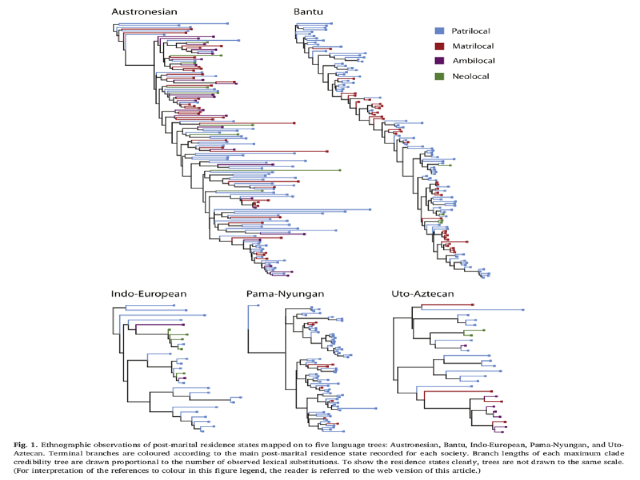Post-Marital Residence Patterns Show Lineage-Specific Evolution

Authors:
Citation:
Details:
Published: 6 June, 2018.
Download:
Abstract:
Where a newly-married couple lives, termed post marital residence, varies cross-culturally and changes over time. While many factors have been proposed as drivers of this change, among them general features of human societies like warfare, migration and gendered division of subsistence labour, little is known about whether changes in residence patterns exhibit global regularities. Here, we study ethnographic observations of post-marital residence in societies from five large language families (Austronesian, Bantu, Indo-European, Pama-Nyungan and Uto-Aztecan), encompassing 371 ethnolinguistic groups ranging widely in local ecologies and lifeways, and covering over half the world’s population and geographical area. We apply Bayesian comparative methods to test the hypothesis that post-marital residence patterns have evolved in similar ways across different geographical regions. By reconstructing past post-marital residence states, we compare transition rates and models of evolution across groups, while integrating the historical descent relationships of human societies. We find that each language family possesses its own best fitting model, demonstrating that the mode and pace of post-marital residence evolution is lineage-specific rather than global.
Related links / Media:
Nothing found.